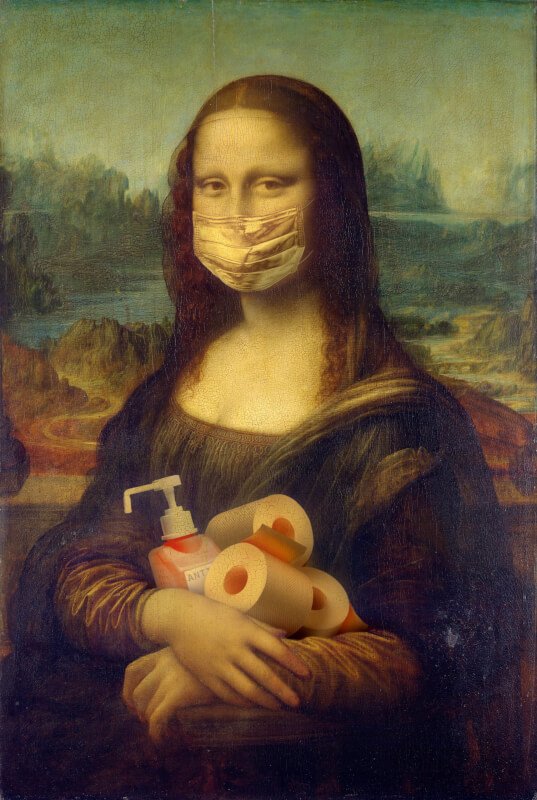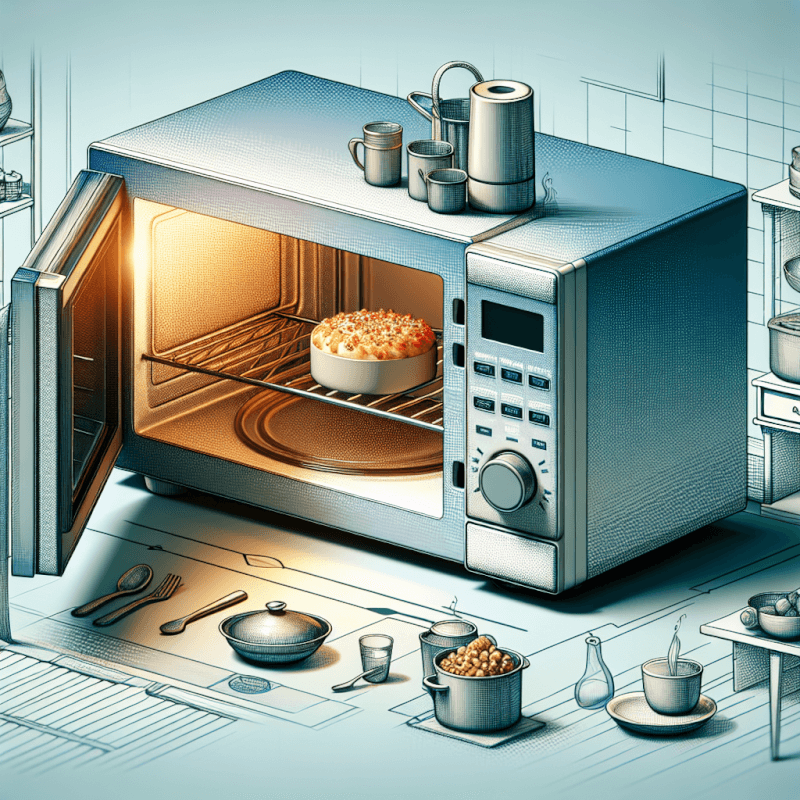Imagine effortlessly creating delicious baked goods in a matter of minutes, without the hassle of preheating an oven or waiting for your treats to cool. With the innovative Bakeware for Microwave, you can now enjoy the convenience of baking in your microwave, saving you time and energy. This game-changing product is designed to be both durable and user-friendly, allowing you to achieve perfectly baked results every time. Whether you’re craving a warm chocolate chip cookie or a fluffy mug cake, Bakeware for Microwave is here to revolutionize your baking experience. Say goodbye to traditional oven baking and say hello to a new era of quick and easy microwave baking.

Different Types of Bakeware for Microwave
Glass Bakeware
Glass bakeware is a popular choice for microwave cooking because it is durable and heat-resistant. Glass is a non-reactive material, which means it won’t absorb odors or flavors from your food. Glass bakeware also allows for even heat distribution, ensuring that your dish is heated thoroughly from all sides.
Silicone Bakeware
Silicone bakeware is another great option for microwave cooking. It is lightweight, flexible, and easy to clean. Silicone is heat-resistant and can withstand high temperatures, making it safe to use in the microwave. Additionally, silicone bakeware is non-stick, which means your food will easily slide out of the mold without any sticking or residue.
Ceramic Bakeware
Ceramic bakeware is known for its excellent heat retention properties. It is particularly useful for dishes that require slow, even cooking. Ceramic bakeware is also microwave-safe and can withstand high temperatures. However, it is important to note that ceramic can be heavy and may take longer to heat up.
Plastic Bakeware
Plastic bakeware is a budget-friendly option for microwave cooking. It is lightweight and easy to handle, making it convenient for everyday use. However, not all plastic containers are microwave-safe, so it is essential to check the labeling before using them in the microwave. Look for containers that are specifically marked as microwave-safe or labeled with the microwave-safe icon.
Metal Bakeware
While metal bakeware is not typically recommended for microwave cooking, there are certain types of metal containers that can be used safely in the microwave. Microwave-safe metal bakeware is usually made from stainless steel or aluminum. These containers are designed with specific features such as insulated handles or a removable metal base to ensure safe and efficient cooking.
Advantages of Using Bakeware for Microwave
Efficiency
Using bakeware specifically designed for microwave cooking ensures faster cooking times and more efficient heat distribution. The materials used in microwave bakeware are chosen to maximize the absorption and retention of microwave energy, allowing your food to cook quickly and evenly.
Versatility
Bakeware for microwave offers a wide range of cooking options. From baking cakes and muffins to steaming vegetables and reheating leftovers, microwave bakeware allows you to prepare a variety of dishes effortlessly. With the right bakeware, you can explore creative recipes and experiment with different cooking techniques.
Convenience
Microwave bakeware is incredibly convenient for quick and easy meals. You can simply pop your dish in the microwave and have a hot and delicious meal ready in minutes. Unlike traditional oven baking, there’s no need to preheat the microwave, which saves time and energy. Plus, many microwave bakeware sets come with airtight lids, making them ideal for storing leftovers.
Uniform Heating
One of the significant advantages of using bakeware designed for the microwave is the uniform heating it provides. Microwave-safe bakeware ensures that your food is evenly cooked, eliminating the risk of overcooking or undercooking certain parts of a dish. This uniform heat distribution results in consistently delicious and well-cooked meals.
Easy Cleaning
Cleaning up after cooking can often be a hassle, but with microwave bakeware, it’s a breeze. Most microwave-safe bakeware is non-stick, allowing food to slide off effortlessly. Additionally, many bakeware sets are dishwasher-safe, saving you time and effort. For handwashing, a simple soak and gentle scrub usually do the trick.
Choosing the Right Bakeware for Microwave
Microwave Compatibility
Before purchasing bakeware for the microwave, it is crucial to ensure that it is compatible with your microwave. Check the manufacturer’s recommendations or look for the microwave-safe symbol on the packaging. This ensures that the bakeware can handle the high temperatures and rapid cooking of the microwave without warping or melting.
Size and Capacity
Consider the size and capacity of the bakeware you need for your specific cooking needs. Take into account the size of your microwave and the amount of food you typically cook. It’s helpful to choose bakeware that fits comfortably inside your microwave and allows for proper circulation of heat. Consider whether you need single-serving sizes or larger dishes for family meals.
Material
Different materials have different heat retention properties, so it’s essential to choose the right material for your cooking needs. Glass and ceramic bakeware are excellent choices for slow, even cooking, while plastic and silicone bakeware offer convenience and ease of use. Consider the pros and cons of each material and choose based on your specific requirements.
Design and Functionality
Look for bakeware designs that offer functionality and practicality. Handles or grips on the sides can make it easier to handle hot bakeware, preventing accidental burns. Some bakeware sets come with lids for convenient storage or transportation. Evaluate the design features that will make your cooking experience more enjoyable and efficient.
Safety Features
When choosing bakeware for the microwave, safety should be a top priority. Look for bakeware with safety features such as heat-resistant materials, insulated handles, and lids with steam vents. It’s important to choose microwave-safe bakeware to prevent any potential hazards or accidents.
Using Bakeware for Microwave
Prepping the Bakeware
Before using your bakeware in the microwave, give it a quick wash to remove any dust or debris. It’s also a good idea to lightly coat the bakeware with a non-stick cooking spray or a small amount of oil to ensure easy food release. This step will make cleaning up a breeze once you’re done cooking.
Proper Placement
To ensure even cooking, it’s important to place your bakeware in the center of the microwave. This allows for optimal heat distribution and prevents any hot or cold spots. Avoid placing the bakeware too close to the sides or top of the microwave, as this can lead to uneven cooking.
Cooking Time and Power Level
Microwave cooking times can vary based on the wattage of your microwave and the specific recipe you’re following. It’s always best to start with the shortest recommended cooking time and adjust as needed. If a recipe calls for a specific power level, make sure to set your microwave accordingly for accurate cooking.
Covering the Bakeware
Covering your bakeware with a microwave-safe lid or microwave-safe plastic wrap can help retain moisture and prevent splatters. It also speeds up the cooking process for certain dishes by trapping in the heat. If a recipe doesn’t specifically call for covering, use your judgment based on the desired outcome.
Safety Precautions
When using bakeware in the microwave, it’s crucial to follow certain safety precautions. Always use oven mitts or heat-resistant gloves when handling hot bakeware to prevent burns. Be cautious when removing any covers or lids, as hot steam can escape and cause injury. Additionally, always follow the manufacturer’s instructions for safe use and avoid using damaged or cracked bakeware.

Popular Brands of Bakeware for Microwave
Pyrex
Pyrex is a well-known and trusted brand for glass bakeware. They offer a wide range of microwave-safe glass bakeware that is durable and reliable. Pyrex bakeware is known for its heat resistance and even cooking. Their bakeware sets often come with tight-fitting lids, making them excellent for storing leftovers as well.
Silicone Zone
Silicone Zone is a brand that specializes in silicone bakeware. They offer a variety of microwave-safe silicone molds and baking dishes. Silicone Zone bakeware is known for its high-quality materials and innovative designs. Their products are flexible, non-stick, and easy to clean.
Corningware
Corningware is a well-established brand in the bakeware industry. They produce ceramic bakeware that is perfect for microwave use. Corningware’s ceramic bakeware is renowned for its excellent heat retention properties and durability. Their classic white bakeware is timeless and fits well in any kitchen decor.
Tupperware
Tupperware is a household name when it comes to food storage, but they also offer microwave-safe bakeware. Their plastic microwave containers are designed specifically for microwave cooking and reheating. Tupperware’s bakeware is known for its excellent quality and practical features, such as their vented lids for steam release.
Ecolution
Ecolution is a brand that focuses on eco-friendly cooking solutions. They offer microwave-safe bakeware made from safe and sustainable materials. Ecolution’s bakeware is often made from non-toxic, non-stick materials that are safe for food contact. Their products are designed with efficiency and the environment in mind.
Cleaning and Maintenance of Bakeware for Microwave
Immediate Cleaning
After using your bakeware in the microwave, it is essential to clean it immediately. Letting food sit in the bakeware can lead to stubborn stains and odors. Rinse the bakeware with warm, soapy water to remove any residue. For stubborn stains or stuck-on food, soak the bakeware in warm, soapy water for a few minutes before scrubbing.
Removing Stains
If your bakeware develops stains over time, there are several methods you can try to remove them. One common method is to create a paste using baking soda and water. Apply the paste to the stained areas and let it sit for a few hours or overnight. Then, scrub the stains with a non-abrasive sponge or cloth. Another option is to soak the bakeware in a mixture of equal parts vinegar and water for a few hours before washing.
Avoiding Harsh Cleaners
When cleaning your bakeware, it’s important to avoid using harsh cleaners or abrasive scrubbers. These can damage the surface of your bakeware and reduce its lifespan. Stick to gentle dish soap and non-abrasive sponges or cloths. If you’re unsure about a specific cleaner, check the manufacturer’s recommendations or contact customer support.
Proper Storage
To prolong the life of your bakeware, it’s important to store it properly. Keep your bakeware in a cool, dry place away from direct sunlight. Avoid stacking heavy items on top of delicate bakeware to prevent any warping or damage. If your bakeware came with lids, make sure they are stored together to prevent any misplacement.
Deep Cleaning
For occasional deep cleaning, it’s good to give your bakeware some extra care. You can use a mixture of equal parts baking soda and hydrogen peroxide to create a paste. Apply the paste to the bakeware and let it sit for a few hours. Then, scrub the surface with a non-abrasive sponge or cloth. This deep cleaning method can help remove any lingering odors or stains.

Recipes for Bakeware for Microwave
Microwave Mug Cakes
Microwave mug cakes are a quick and convenient dessert option. Simply mix the ingredients in a microwave-safe mug, pop it in the microwave, and enjoy a freshly baked cake in minutes. There are endless flavor variations available, from classic chocolate to fruity options like lemon or strawberry.
Microwave Omelettes
Making omelettes in the microwave is a simple and mess-free way to enjoy a delicious breakfast. Beat eggs, add your favorite fillings such as vegetables, cheese, or cooked bacon, and microwave in a microwave-safe dish. In just a few minutes, you’ll have a fluffy and flavorful omelette ready to enjoy.
Microwave Roasted Veggies
Roasting veggies in the microwave is a quick and healthy side dish option. Toss your favorite vegetables in olive oil, seasonings, and herbs, and spread them out in a microwave-safe dish. Microwave on high, stirring occasionally, until the veggies are tender and lightly golden. It’s a fuss-free way to add nutritious vegetables to your meals.
Microwave Macaroni and Cheese
Craving a comforting bowl of macaroni and cheese? You can make it in the microwave in no time. Cook pasta in a microwave-safe dish according to package instructions, then stir in cheese, milk, and seasonings. Microwave in short bursts, stirring in between, until the cheese is melted and creamy. This quick and easy recipe is perfect for satisfying cheesy cravings.
Microwave Frittatas
Whip up a delicious frittata in the microwave for a satisfying meal any time of the day. Beat eggs, add your favorite vegetables, cheese, and seasonings, and pour the mixture into a microwave-safe dish. Microwave on medium power until the eggs are set and the frittata is cooked through. It’s a versatile dish that can be customized to your taste preferences.
Common FAQs About Bakeware for Microwave
Can I Use Regular Bakeware in the Microwave?
Not all regular bakeware is suitable for microwave use. Metal bakeware can cause arcing and be a fire hazard in the microwave. It’s also important to consider the heat resistance and microwave compatibility of other materials such as glass, ceramic, and plastic. Only use bakeware that is specifically labeled as microwave-safe.
Is Silicone Bakeware Safe for Microwaving?
Yes, silicone bakeware is safe for microwaving. Silicone is heat-resistant and can withstand high temperatures, making it ideal for microwave cooking. However, always make sure to check the manufacturer’s instructions and guidelines for safe use.
Is Microwaving Food in Plastic Bakeware Harmful?
Not all plastic bakeware is safe for microwaving, as some plastics may release harmful chemicals when exposed to high heat. Always check the labeling of the plastic bakeware to ensure it is designated as microwave-safe. Look for containers that are BPA-free and labeled with the microwave-safe symbol.
Can I Use Metal Bakeware in the Microwave?
Most metal bakeware is not safe for microwave use because it can cause arcing and damage the microwave. However, there are specific types of metal bakeware that are designed for microwave cooking. Look for microwave-safe metal bakeware that is made from stainless steel or aluminum and follow the manufacturer’s instructions for safe use.
How Can I Test the Compatibility of Bakeware for Microwave?
To test the compatibility of bakeware for the microwave, you can conduct a simple test. Place an empty, microwave-safe dish in the microwave with a cup of water next to it. Heat the dish and water on high power for one minute. If the dish remains cool while the water heats up, it is microwave-safe. However, if the dish becomes hot, it is not suitable for microwave use.

Conclusion
Bakeware specifically designed for the microwave offers a range of benefits, from efficiency and convenience to versatility and easy cleaning. With different types of bakeware available, such as glass, silicone, ceramic, plastic, and even microwave-safe metal, there are options to suit every cooking need. By choosing the right bakeware, considering factors like microwave compatibility, size, material, design, and functionality, you can enhance your microwave cooking experience. Remember to follow proper usage and safety guidelines, and explore delicious recipes to make the most of your bakeware for the microwave.


